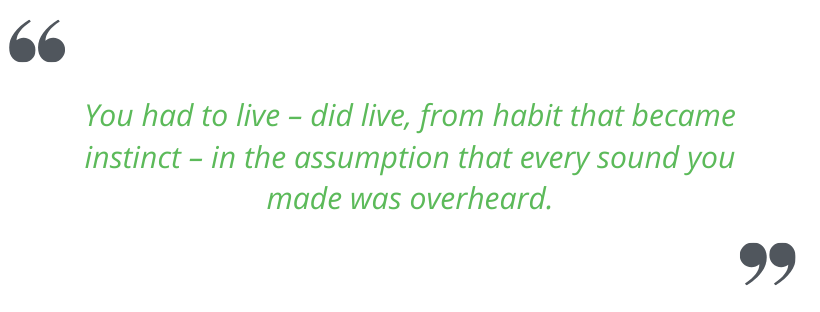The advent of 5G could be the most significant change to the digital landscape of the last 5-10 years – and this in an industry where changes happen every minute of every day.
Promising connection, performance and content levels in excess of only the most dedicated wired environments, 5G looks likely to further embed digital platforms into everyday lives (if any of us could think that this was possible).
But what could this look like? Surely digital is so embedded in our lives now – you only need to take a look at a platform full of commuters staring into their smartphones – what possible difference could a new generation of mobile connectivity bring?
Well, the foundations from a human/digital relationship perspective have been in place for some time now – think security cameras, number plate recognition systems, fingerprint or facial access to our own devices and auto passport gates at airports. And although they are not invisible we have become attuned (some would say trained) in changing our behaviour or awareness and accommodating this technology into our daily lives.
5G potentially makes this even more ingrained into our everyday lives – it brings ‘observational technology’ into our homes, our bedrooms uncovering the most detailed (and potentially personal) of our individual actions.
Using our mobile phone (with Apple or Google Pay installed) already allows us to navigate tube stations, 5G removes the need to take the phone from our pocket. Having Amazon Prime on your phone already allows some to purchase without any check-out, how about by recognising an increase in physical activity (through a Third Party app or the phone’s accelerometer) specific products are automatically (in real-time) added to your basket or a specific programme added to your Prime watchlist?
One developing component to the future of invisible interfaces regards progressing the facial recognition technology already in place. As just one example, businesses such as Alipay (part of Alibaba) already provide a service called ‘Smile to Pay’ – which enables users to do exactly what it sounds like. Could we, therefore, see 5G allowing us to withdraw money from ATM’s simply by looking into a screen? This, when aligned with using our phones or smartwatches as types of ‘invisible’ payment, could (as identified by Accenture – a global consultancy) result in the advent of ‘walking barcodes’ or invisible interfaces.
The use of this technology is already live, providing monitoring services for the elderly and vulnerable. Rather than users entering the social care system, these services (including the use of IoT) allow users to stay safe in their own homes for longer. For example, where the monitoring of movement (or lack of) is used as an early warning signal of potential individual difficulties.

If the interface becomes invisible what does this mean to human/computer interaction? Would it even exist anymore, would humans become the interface?
In addition to understanding the tech and any specific ‘use cases’, there are also two areas that provide some interesting areas of research and testing. Privacy and forced/false behaviour.
Clearly there are significant privacy issues with all types of biometric technologies (the tech that underpins invisible interfaces) – how does one give authority to access physical attributes? Although, who of us really reads through the existing 30 pages of T’s & C’s on websites and apps today?
Who holds the data that is gathered to make interfaces invisible? Do the interfaces ever switch off? Can we ‘close’ them – like with an app or a web browser?
Working through the ethical and legislative requirements of privacy compliance provides opportunities to implement ‘positive friction’. Here we could see random occasions when the technology requires the user to be reminded of terms and conditions and privacy rights – i.e. making the interface visible at relevant points or for specific transactions.
The area of forced/false behaviour also is providing some interesting challenges in solution design.
George Orwell in 1984 wrote –

This behaviour is termed the Hawthorne effect and has been heavily verified and researched (check it out online). Primarily it outlines that humans do change behaviour when they know they are being ‘watched’. Within Experience UX our awareness and identification of the causes and behaviours of the Hawthorne effect feed directly into all our testing and design processes.
Indeed, in many situations the Hawthorne effect can be a positive (for the individual and society) – ‘forcing’ a reduction vehicle speed, preventing shoplifting, etc. But this can also create ‘false’ human behaviour – hence our focus and expertise in identifying and allowing for its influence.
With screen-based interactions we have developed ‘buffers’ – body language, facial expressions and the occasional sigh tend to offer glimpses into the true feelings of a user, as well as our anthropological and psychological knowledge and expertise.
Invisible interfaces offer great opportunity but also significant challenges for human-centred design; from the tech itself, from privacy needs, and from forced and false behaviour. We’re making progress, and continue to work with our clients in designing solution frameworks to flow through those three components, and we must all keep a close eye on the impact, both good and bad, this will have for the long term customer experience.
You can catch up on our webinar where we talked about this in more depth here.

